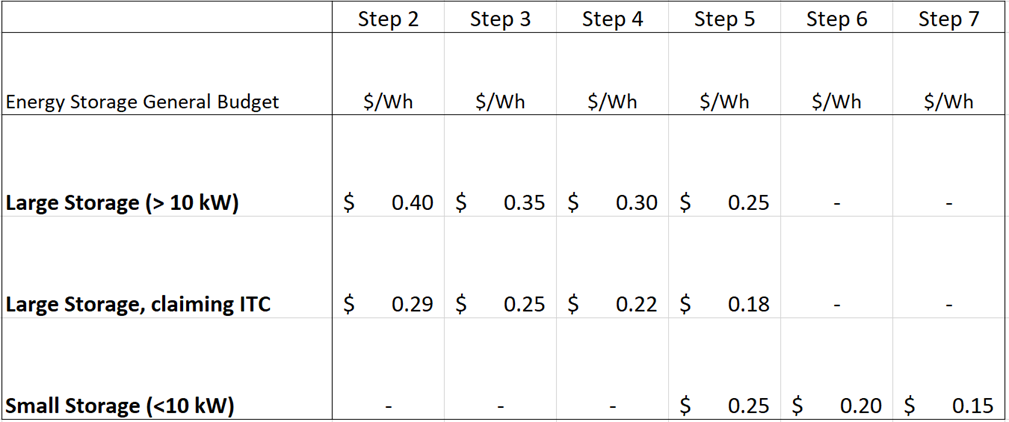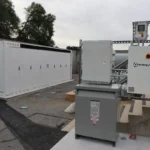The Self-Generation Incentive Program (SGIP) is one of California’s most significant efforts to promote the adoption of renewable energy, specifically targeting battery storage systems. Implemented by the California Public Utilities Commission (CPUC), SGIP is designed to provide financial incentives to homeowners, businesses, and other entities that install qualifying battery storage systems. By reducing the upfront costs associated with these systems, SGIP is helping to accelerate the transition to clean energy and increase the state’s energy resilience.
A Deep Dive into SGIP Incentives for Battery Storage
SGIP offers a multi-step incentive structure, with amounts decreasing over time as more funding is provided and more projects are deployed. This encourages early adoption, as those who apply early benefit from higher incentive amounts.
There are three categories of incentives: General Market, Equity, and Equity Resilience. The General Market rebate covers about 10-15% of the cost of an energy storage system (ESS); the Equity rebate covers roughly 85%; and the Equity Resilience covers nearly 100% of the project cost. Currently, the Large Storage ESS budget for the General Market rebate is on Step 5 with a rate of $250/kWh, and the Small Storage budget is on Step 7 with a rate of $150/kWh.

The Equity and Equity Resilience rebates offer increased incentives for low-income households and disadvantaged communities, and energy storage installations in areas frequently affected by public safety power shutoffs (PSPS) due to wildfire risks. Customers who qualify for the Equity or Equity Resilience incentive categories receive rebates of $850/kWh and $1,000/kWh.
SGIP also provides additional funding for systems paired with renewable energy sources, such as solar. This combination maximizes the environmental benefits and the overall efficiency and cost-effectiveness of the system. Businesses that install a solar-plus-storage system under SGIP can expect to see significant long-term savings on their energy bills, in addition to the upfront rebate provided by the program. To view the latest SGIP budget updates, visit the SGIP home page here. You can also check the statewide budget status and view individual updates for PG&E, SCE, CSE, and SoCalGas.
Application Process: How to Take Advantage of SGIP
Applying for SGIP incentives is straightforward but requires planning and coordination with your utility provider and installer. The first step is to select an installer experienced with SGIP and battery storage systems. This installer will assess your business’s energy needs and determine the appropriate size and type of battery system for your situation. They will also help you complete and submit the SGIP application, which includes detailed information about the proposed system, its expected performance, and how it will be integrated with your existing systems. This is where many developers turn to ETB Developer to provide these data points and expected performance metrics. Once the application is submitted, it will be reviewed by your utility provider or the SGIP Program Administrator. After installation, the system will be inspected to ensure it meets all program requirements, and an incentive payment will be issued.
Maximizing the Benefits of SGIP: Long-Term Savings and Energy Independence
SGIP offers significant long-term benefits for businesses that invest in battery storage systems. One of the primary advantages is energy independence. By storing excess energy generated by a solar PV system, businesses can reduce reliance on the grid during peak hours, when electricity rates are highest. SGIP’s focus on resilience is particularly relevant in California, where the threat of wildfires and the resulting public safety power shutoffs (PSPS) events have made energy security a top priority. Battery storage systems installed under SGIP can provide critical backup power during these outages, ensuring that essential devices remain operational. In addition to the resilience benefits, battery storage systems can also enhance the efficiency of a business’s energy use. By storing energy when it is cheapest and using it during peak periods, businesses smooth out their energy consumption and avoid the spikes in usage that lead to higher bills.
The Future of Energy in California with SGIP
By providing substantial financial incentives for battery storage systems, SGIP is helping to make energy storage more accessible to businesses statewide. Potential participants interested in taking advantage of SGIP should act quickly, as incentives are allocated on a first-come, first-served basis, and funding levels decrease over time. ETB Developer makes it incredibly easy to model your solar and storage projects with SGIP rebates included. Multiple SGIP incentive options are available when adding a system to your proposal. ETB Developer offers all the necessary data points and information for applying, and we can assist you with the application process using our ETB Controller. If you have any questions about modeling with these incentives, contact your Energy Toolbase account manager or schedule a call with our team today.



